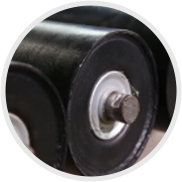 Afrikaans
Afrikaans  Albanian
Albanian  Amharic
Amharic  Arabic
Arabic  Armenian
Armenian  Azerbaijani
Azerbaijani  Basque
Basque  Belarusian
Belarusian  Bengali
Bengali  Bosnian
Bosnian  Bulgarian
Bulgarian  Catalan
Catalan  Cebuano
Cebuano  Corsican
Corsican  Croatian
Croatian  Czech
Czech  Danish
Danish  Dutch
Dutch  English
English  Esperanto
Esperanto  Estonian
Estonian  Finnish
Finnish  French
French  Frisian
Frisian  Galician
Galician  Georgian
Georgian  German
German  Greek
Greek  Gujarati
Gujarati  Haitian Creole
Haitian Creole  hausa
hausa  hawaiian
hawaiian  Hebrew
Hebrew  Hindi
Hindi  Miao
Miao  Hungarian
Hungarian  Icelandic
Icelandic  igbo
igbo  Indonesian
Indonesian  irish
irish  Italian
Italian  Japanese
Japanese  Javanese
Javanese  Kannada
Kannada  kazakh
kazakh  Khmer
Khmer  Rwandese
Rwandese  Korean
Korean  Kurdish
Kurdish  Kyrgyz
Kyrgyz  Lao
Lao  Latin
Latin  Latvian
Latvian  Lithuanian
Lithuanian  Luxembourgish
Luxembourgish  Macedonian
Macedonian  Malgashi
Malgashi  Malay
Malay  Malayalam
Malayalam  Maltese
Maltese  Maori
Maori  Marathi
Marathi  Mongolian
Mongolian  Myanmar
Myanmar  Nepali
Nepali  Norwegian
Norwegian  Norwegian
Norwegian  Occitan
Occitan  Pashto
Pashto  Persian
Persian  Polish
Polish  Portuguese
Portuguese  Punjabi
Punjabi  Romanian
Romanian  Russian
Russian  Samoan
Samoan  Scottish Gaelic
Scottish Gaelic  Serbian
Serbian  Sesotho
Sesotho  Shona
Shona  Sindhi
Sindhi  Sinhala
Sinhala  Slovak
Slovak  Slovenian
Slovenian  Somali
Somali  Spanish
Spanish  Sundanese
Sundanese  Swahili
Swahili  Swedish
Swedish  Tagalog
Tagalog  Tajik
Tajik  Tamil
Tamil  Tatar
Tatar  Telugu
Telugu  Thai
Thai  Turkish
Turkish  Turkmen
Turkmen  Ukrainian
Ukrainian  Urdu
Urdu  Uighur
Uighur  Uzbek
Uzbek  Vietnamese
Vietnamese  Welsh
Welsh  Bantu
Bantu  Yiddish
Yiddish  Yoruba
Yoruba  Zulu
Zulu conveyor belt idler rollers
Understanding Conveyor Belt Idler Rollers Key Components of Material Handling Systems
Conveyor belt systems are an essential part of many industries, facilitating the efficient movement of materials and products. One of the critical components of a conveyor system is the idler roller, which plays a crucial role in the overall functionality and reliability of the conveyor belt. This article will explore the significance of idler rollers, their types, and their applications.
Understanding Conveyor Belt Idler Rollers Key Components of Material Handling Systems
There are several types of idler rollers, each designed to meet specific operational needs. The most common types include return idlers, trough idlers, and impact idlers. Return idlers are located on the return side of the belt, guiding it back to the head pulley. Trough idlers, on the other hand, are typically used in the carrying section of the conveyor. They create a trough shape that enables the belt to carry more load and reduces spillage of materials. Impact idlers provide additional support in areas where heavy materials are dropped onto the conveyor belt, absorbing the shock and minimizing damage to the belt.
conveyor belt idler rollers

The material and design of idler rollers are also crucial for their performance. Idler rollers can be made from various materials, including steel, plastic, or rubber, each offering different benefits. For instance, steel rollers are robust and capable of handling heavy loads, while plastic and rubber rollers offer lower weight and resistance to corrosion. The choice of material often depends on the specific application and environmental conditions, such as exposure to moisture, chemicals, or extreme temperatures.
Maintenance of idler rollers is essential to ensure the longevity and efficiency of a conveyor system. Regular inspections should be performed to check for signs of wear, misalignment, or damage. Proper lubrication is also critical to reduce friction and prevent overheating, which can lead to premature failure. By implementing a routine maintenance program, companies can avoid unexpected downtime and costly repairs.
In conclusion, conveyor belt idler rollers are indispensable components of material handling systems. Their ability to support the conveyor belt, reduce friction, and maintain alignment makes them vital for efficient operation. Understanding the types, materials, and maintenance of idler rollers can significantly enhance a company's productivity and equipment lifespan. As industries continue to evolve, the importance of reliable and efficient conveyor systems, underscored by well-designed idler rollers, will only grow. Investing in high-quality idler rollers and proper maintenance practices will undoubtedly benefit businesses in the long run, ensuring smooth operations and reduced costs.
-
Revolutionizing Conveyor Reliability with Advanced Rubber Lagging PulleysNewsJul.22,2025
-
Powering Precision and Durability with Expert Manufacturers of Conveyor ComponentsNewsJul.22,2025
-
Optimizing Conveyor Systems with Advanced Conveyor AccessoriesNewsJul.22,2025
-
Maximize Conveyor Efficiency with Quality Conveyor Idler PulleysNewsJul.22,2025
-
Future-Proof Your Conveyor System with High-Performance Polyurethane RollerNewsJul.22,2025
-
Driving Efficiency Forward with Quality Idlers and RollersNewsJul.22,2025





























